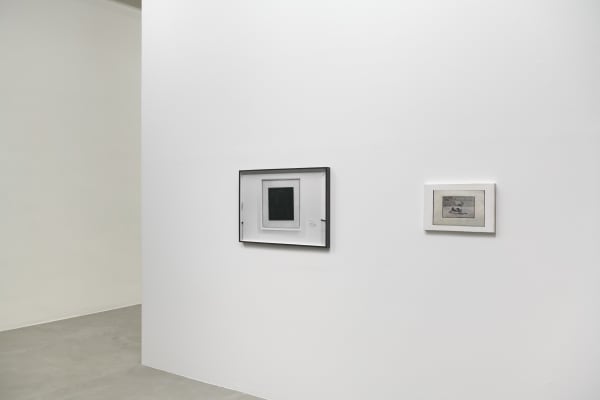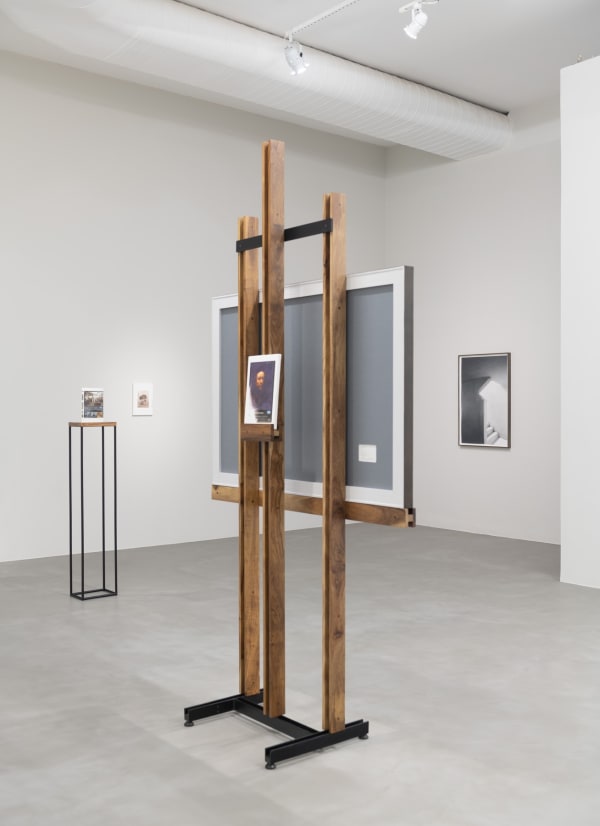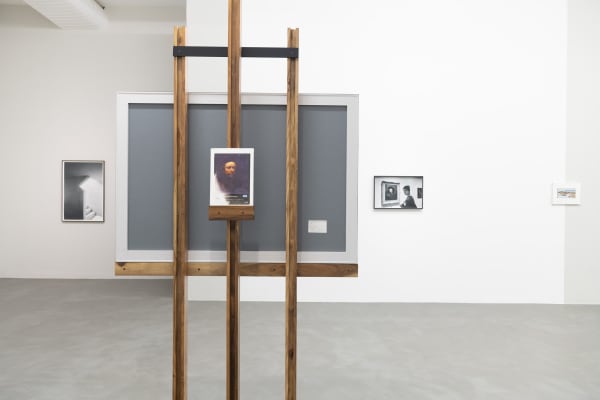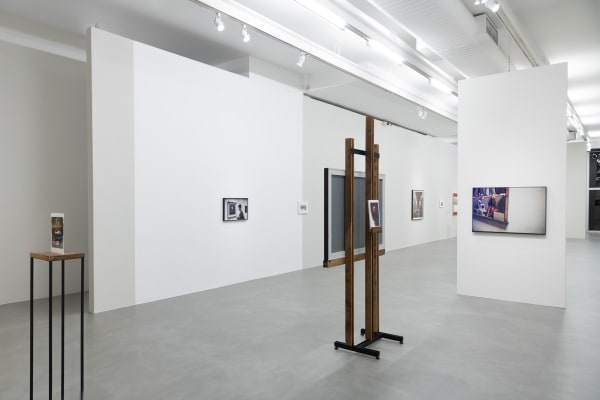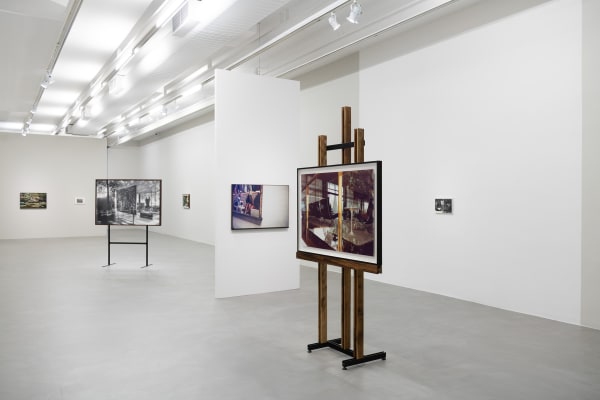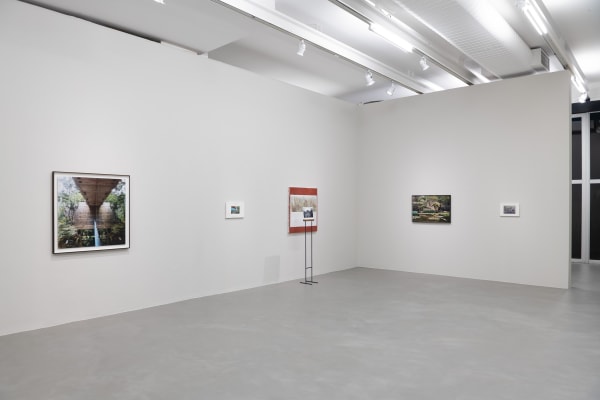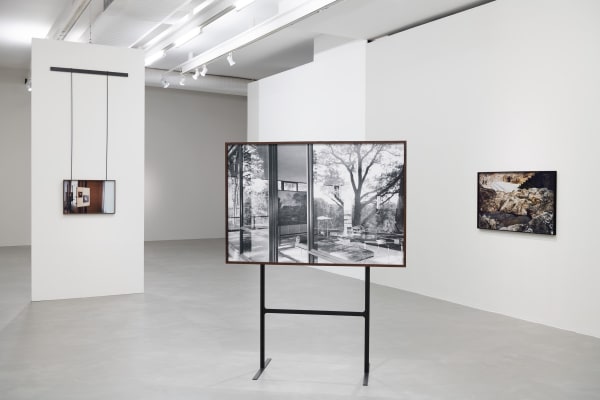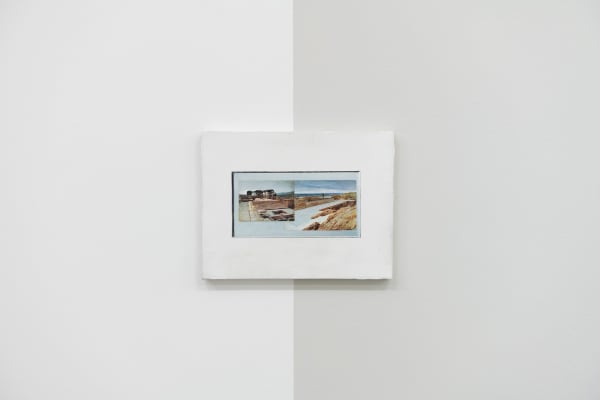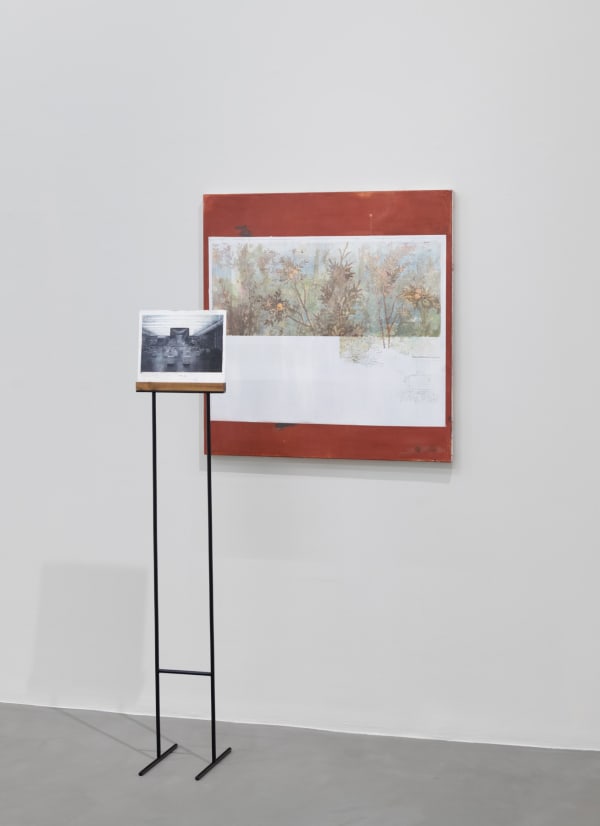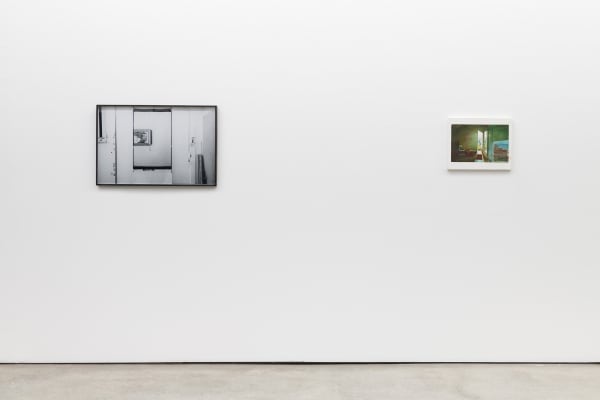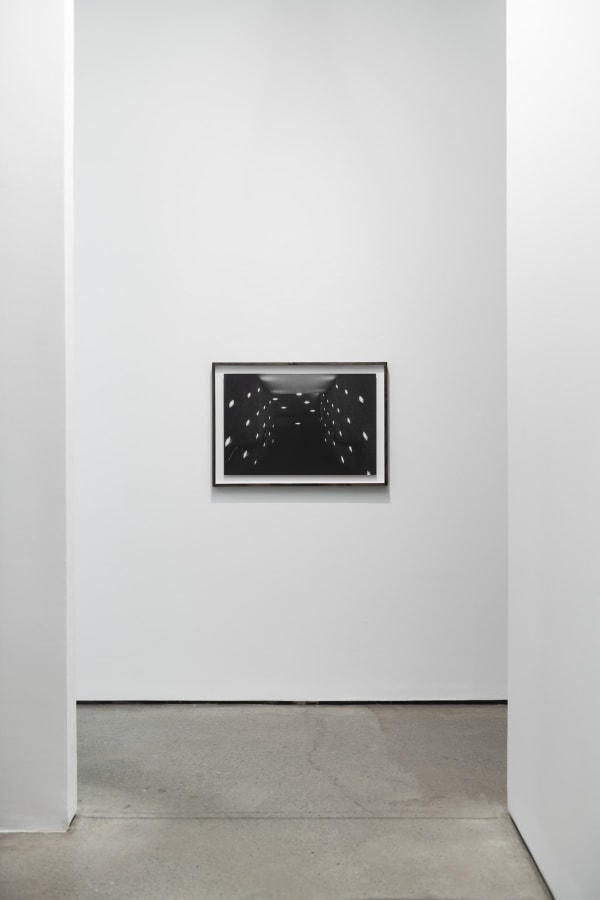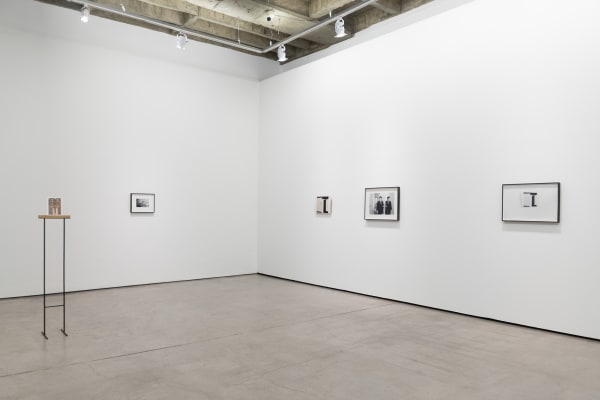A lua busca la sombra: Juan Araújo and Mauro Restiffe
reproduction, reflections, doubles
Tiago Mesquita
The exhibition A Lua busca la sombra [The Moon Seeks the Shadow] – a collaboration between artists Juan Araujo and Mauro Restiffe – is a game of doubles. By bringing closer together photographs and paintings that are exhibited in very specific ways, the artists make one object resonate with the other, and the other, and the other, like in a house of mirrors, in which one reflection deforms the next, until there is no recollection of where the final image originates from. The specular logic of reproduction, which is omnipresent in the work of Araujo and very significant in Restiffe’s, adopts different meanings when we begin to compare the works in relation to one another.
The exhibition is the result of a friend’s request. Araujo’s paintings are based on previously collected images. Interested in architecture, he has painted photographs that record the works of Carlos Raúl Villanueva, Oscar Niemeyer, Pancho Guedes, Vilanova Artigas, Marcos Acayaba, Álvaro Siza, and Gerrit Rietveld, amongst others. In 2019, Araujo wanted to work with the colors of Paulo Mendes da Rocha’s King House in São Paulo. However, he did not find any images suitable for his purpose. He then asked Mauro Restiffe to photograph the house for him, which he did.
It worked; and it worked very well. Even though Araujo primarily used the photographs to create his paintings, the dialogue between the two oeuvres gradually evolved to form other links. They saw that it was possible to draw on a notion of mirroring that went beyond the comparison between painted image and photographed image. In fact, the exhibited works are not brought together for their similarities.
The images do not necessarily coincide. Even though it can happen, they mostly resonate in different ways. At times, they are brought closer by an attempt to reproduce something described in the photo; but this approximation can also be achieved by the way they look at the landscape, depict ruins of monuments or describe representations of death. When the artists show, side by side, the photographs that Mauro Restiffe took of Malevich’s Black Square and Juan Araujo’s reproduction of The Agility and Audacity of Juanito Apiñani in the [the Ring] at Madrid, which is Plate 20 in Francisco Goya’s “Tauromaquia” series, it is this aspect that comes to mind.
Mauro Restiffe’s photograph draws on a painting where Malevich wanted to undo the traditional space of art. Allegedly, this was to be the death of a consolidated form of representation and the birth of a new world. Malevich achieves this via the contrast between form and background. But this is not the way things happened in Restiffe’s photograph, where the entire plane is granulated and porous. Some parts are denser, others sparser. The imposing square is no longer the burying place of tradition and the flag of a new era. It acquires a permeable surface, as if it was about to lose its solidity, or about to collapse, like the promises of a new world in the 20th century.
Araujo’s painting also works by contrast, highlighting a certain wear and tear in the passage of time. He reproduces a photograph of Goya’s work, where the bullfighter is holding himself up with a spear, moments before falling onto the bull’s horns.
Goya reproduces the instant immediately before death. The fatality is announced by the shadow reproduced on the ground. Araujo gives subtle emphasis to the shadow, as if highlighting the tragedy’s obviousness or inevitability. The yellow in the painting is a way of treating the image not only as an artistic creation but also as a visual artifact. For Araujo, to duplicate the image is to reassert the tragedy’s imminence; in his painting, the shadow is even clearer. Therefore, when we see Restiffe’s photograph next to Araujo’s painting, the tragic dimension is amplified. The effect is that of an artist highlighting what the other is saying but without having to resort to reproduction.
However, this reflective game takes differing routes. In Restiffe’s work, the reverberation appears in Casa de James King #4, a portrait of art dealer Luisa Strina, and in Matheus e Rembrandt (2015), where the photographer’s son turns his eyes towards the camera, echoing the Dutch painter’s self-portrait. In fact, these echoes are recurrent when Restiffe works with traditional artworks. We see pairs of angels, portraits, and landscapes.
In the photographs taken through the glass of architectural monuments, the rationale is different. In the image taken at Philip Johnson’s Glass House, the reflection undoes the glass’ structural transparency. Here, the glass is at once transparent and reflective. The split between inside and outside becomes relative, and the garden fragments reflected on the glass are echoes of the Poussin painting that we see in the background. Therefore, the reflection is also the echo of the French painter’s Arcadian environment.
When Araujo reworks the photograph that Restiffe took of the inside of Alvorada Palace (the official presidential residence) in Brasília, this corrosion of boundaries comes to the fore. The image worked by Araujo is no longer the same; it is an electronic version, printed in low resolution. In the painting, it is part of a collection of visual references taken from internet search engines. We see, below the palace, Google captions about a Rembrandt painting and a Wikipedia entry.
Araujo uses the printed version of his searches, as we see by his imitations of marks of wear and tear on the surface, as well as creases made by crumpling or scratching. The original image is very different from the painted image. It is tonal, non-granulated, blueish and jaded. The edges are corroded; the description on the photo seems to be fading, slowly but surely. The marks of use appear in the way that Juan Araujo shapes the surface, whitens the sides, and above all, reworks the reflections. The color variation in the painting is less marked than in the photograph. Reflections appear here as spots that erase the figure’s outline. Whatever had been there is no longer there. The reproduction loses the object, bit by bit, until the vague memory of what was there becomes something else.

